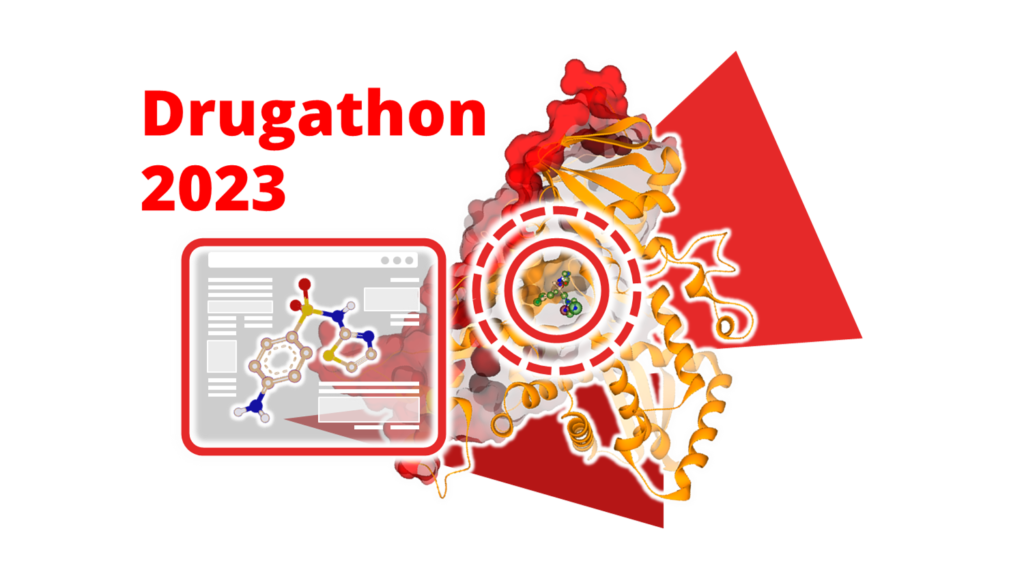Please keep in mind, that chemical diversity is important to increase the hit rate. Therefore, even if a compound is not among the most potent ones, it may be selected for follow up. Participants are therefore highly encouraged to submit every novel scaffold they deem appropriate and interesting.
Feel free to upload whole sets of molecules. If you docked and scored 100 and more compounds it increases the variety of compounds we can work with. You do not have to limit yourself to one a single molecule, although you may discard unpromising results.
Note: To ensure trackability of new entries, those will be added to the top of the list.
(List contains only examples of submissions. All submitted compounds will be considered during the follow up.)
Interesting submissions (selection)
SMILES [max. estimated affinity]
- 33. COC(C(N1)=O)=CN([C@@H](C[C@@H]2O)O[C@@H]2NC(CC[NH3+])=O)C1=O [78.2 nM]
- 32. CC1=C(C)NC(n(c(NC[C@@H](CNN2C(NC/C=C/COC[NH2+]Cc3cocc3C(CO)=O)=COC2)O)c2)nc2-c2cccs2)=NC1=O [78.3 pM]
- 31. Cn1c(O[C@H](CCC2)[C@@H]2[NH2+]CC(NCCc(cc2)ccc2S(N)(=O)=O)=O)[nH+]c2c1cccc2 [60.8 nM]
- 30. Cc1[nH+]c(S(N(CCC2)CCN2c2c(cnn3Cc4cc(C#N)ccc4)c3ccc2)(=O)=O)cn1C [24.3 nM]
- 29. NS(c1ccc(CCNC(CNC(NC(SCC(Nc2ccccc2)=O)=N2)=CC2=O)=O)cc1)(=O)=O [51.7 nM]
- 28. C[C@H]([C@H]1[NH2+]CC[C@@H]1COCC([C@H]1C[NH2+]CC1)=O)C(NO/C=C/C(C(NC[C@@H](C=C1)C=C1OCC#N)=O)=O)=O [0.2 nM]
- 27. CC(C)(C)c1cc(C(CNc2cc(F)c(C)c(C[NH3+])c2)=O)cc(NCCNc2nc3ncccc3cc2)c1 [1.5 nM]
- 26. O=C(Cc1ccc(C[NH2+]CC2CCCC2)cc1)NCCc(cc1)cc(F)c1F [10.9 nM]
- 25. CC(C1CC1)C(NCc1csc(CNC(COCC(OC)=O)=O)n1)=O [124.1 nM]
- 24. NC[C@H](CC[NH2+]CC[NH3+])C(NCCc1cc([C@@H](C[NH3+])[NH3+])ccc1)=O [1.3 nM]
- 23. Cn1c(cc(CCNC(c2ncc(Oc3[nH+]c(CC(F)(F)F)ccc3)s2)=O)cc2)c2nc1 [10.7 nM]
- 22. [NH3+][C@@H](CCO)C(Nc1cc(C(NCCc(cc2)cc3c2[nH]nc3)=O)ncn1)=O [12.2 nM]
- 21. O=C(Cc1cncs1)CNC(CCC[NH2+]CCc1nc(-c2ccccc2)c[nH]1)=O [70.8 nM]
- 20. COc(cc(CCNC(C(NCC[C@H]1OCC[NH2+]C1)=O)=O)cc1O)c1OC [132.6 nM]
- 19. CCc1cnc(C(NCCc(cc2)cc3c2nc[nH]3)=O)s1 [252.0 nM]
- 18. CC(N(C1)C[C@@H](C2)[C@H]1CN2C(/C=C/[C@@H](CC[N@H+](C)C1)C[C@H]1[NH2+]CCc1[nH+]c(-c2ccccc2)c[nH]1)=O)=O [9.0 nM]
- 17. CCN(C)c(cc1)cc(NC(Nc2c[nH]c3c2cccc3)=O)c1C(NOc1cccc(CNC(N(C)CCc2ncccc2)=O)c1)=O [1.3 nM]
- 16. NS(c1ccc(CCNC(CCc2cc([C@H](Cc3nc(-c4ccccc4)c[nH]3)c3ccccc3)ccc2)=O)cc1)(=O)=O [0.3 nM]
- 15. C[C@H](COC)C(NCc1nc(CNC(C(N)=O)=O)cs1)=O [543.1 nM]
- 14. COc1cc(CCCNC(C(NCc2cccnc2F)=O)=O)cc(OC)c1O [774.4 nM]
- 13. [O-][P@@](NC([C@H]1[NH2+]CCC1)=O)(OC(NCC[C@@H]1CC[NH2+]CCC1)=O)=O [961.6 nM]
- 12. COc1ccc(CSc2nnc(NC(c3cc(C[NH+]4CC[NH2+]CC4)ccc3)=O)s2)cc1 [58.6 nM]
- 11. OCC(c1cocc1C[NH2+]COC/C=C/CNC1=COCN1C(F)(F)F)=O [8.8 nM]
- 10. Cc1cccc(CC[N@@H+](CC2)C[C@@H]2C(NCCc(cc2)ccc2S(N)(=O)=O)=O)[nH+]1 [167.7 nM]
- 9. CCc1cc(NCc2cccc(-n(cc3)cc3C(NCCc(cc3)ccc3S(N)(=O)=O)=O)[nH+]2)c2[nH]cnc2c1 [0.7 nM]
- 8. [NH3+]C[C@@H](C/C=C/[C@H](CCC(NC[C@H](c(cc1)cc(C[NH3+])c1S(=O)=O)F)=N)CC[NH2+]C[C@@H](c1c(CC(C[NH3+])=C2)c2ccc1)[NH3+])F [6.6 pM]
- 7. C[C@@H](CNC(C(NCCc(cc1)cc2c1[nH]cc2)=O)=O)C[NH2+]C [13.2 nM]
- 6. CNC(C(C(C1)(CN1C(C(/C=C/C[NH2+]C[NH2+]Cc1[nH+]c2ccccc2cc1)=O)=O)O)(F)F)=O [3.7 nM]
- 5. NS(c1ccc(CCNC(Cc2cc(F)cc(NC3C=CC=C3)c2)=O)cc1)(=O)=O [ND]
- 4. Cn1c(cc(C[C@@H](N2N=Cc(cc(cc3)O[C@@H](CC4)[NH2+]C[C@@H]4O)c3C2=O)O)cc2)c2nc1 [1.6 nM]
- 3. O[C@@H](Cc(cc1)cc2c1nco2)N1N=Cc(cc(C[C@@H](CC2)[NH2+]C[C@@H]2O)cc2)c2C1=O [3.4 nM]
- 2. CC(N(C1)C[C@@H](C2)[C@H]1CN2C(c(cccc1)c1N(C(C1=CC(c2ccccc2)=CNC1=O)=O)N)=O)=O [13.7 µM]
- 1. NS(c1ccc(CCNC(CCCCC[NH2+]CC(c2c3[nH]cnc3ccc2)O)=O)cc1)(=O)=O [0.5 nM]
- Submitted compounds will be added to the list
